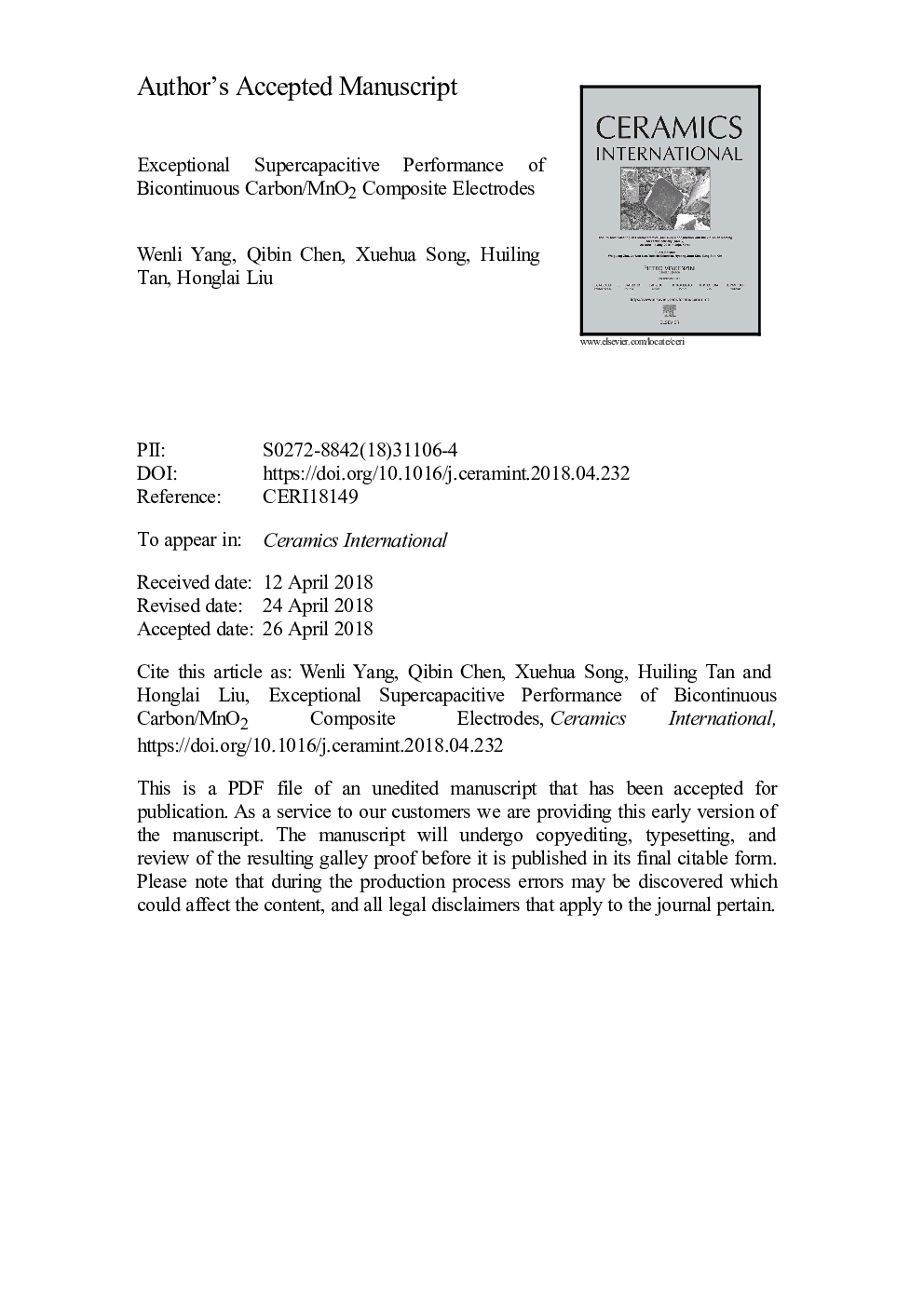| Article ID | Journal | Published Year | Pages | File Type |
|---|---|---|---|---|
| 7886537 | Ceramics International | 2018 | 33 Pages |
Abstract
A new type of porous carbon/MnO2 composites, having bicontinuous structures, i.e., continuous channels and carbon skeletons, was prepared using a phase separation method, followed by a carbonization procedure and a subsequent redox reaction. In this work, such composite electrodes show a high specific capacitance of ca. 260â¯Fâ¯gâ1 at 0.5â¯Aâ¯gâ1 in 1â¯M Na2SO4 aqueous solution, a superior cycling stability (~80% retention after 2000 cycles) and a distinctive high-rate performance. Especially, unique bicontinuous structures endow such composites with a great specific capacitance of the constituent MnO2 (~1100â¯Fâ¯gâ1), very close to the theoretical value. These excellent electrochemical behaviors may render this material a promising candidate as high-performance electrodes in supercapacitors. Therefore, our findings suggest that the strategy for constructing bicontinuous hybrid electrodes represents an exciting direction for designing next-generation supercapacitors.
Related Topics
Physical Sciences and Engineering
Materials Science
Ceramics and Composites
Authors
Wenli Yang, Qibin Chen, Xuehua Song, Huiling Tan, Honglai Liu,
